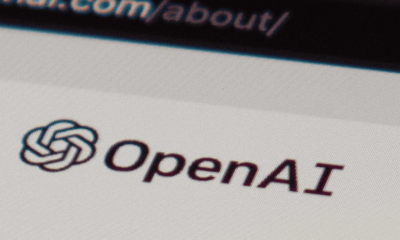AI Tool
2024 Voice Intelligence and Security Report: How Deepfakes and AI Are Changing the Game – Insights from Pindrop

With the rapid evolution of artificial intelligence, deepfakes are emerging as a formidable challenge in security and fraud prevention. Pindrop’s 2024 Voice Intelligence and Security Report investigates into the profound impact of these deceptive technologies on various sectors, highlighting the rising concerns and innovative solutions being developed. Explore the intricacies of deepfakes and AI in this insightful analysis, uncovering the shifting landscape of voice-based security in the digital age.

The Rise of Deepfakes: A Double-Edged Sword
The Power of Deepfakes in Creative Industries
Double-edged technologies like deepfakes have remarkable potential in creative industries, enabling the production of realistic synthetic content for entertainment and media. However, this same technology also poses serious security risks, as highlighted in Pindrop’s 2024 Voice Intelligence and Security Report.
The Dark Side: Deepfakes as a Tool for Deception
Deepfakes serve as a potent tool for deception, particularly in sectors like banking and finance, where malicious actors can manipulate AI-generated voices to carry out fraudulent activities. This alarming trend was underscored by a significant increase in data compromises and breaches in 2023, as reported by Pindrop.
It is crucial to be aware of the dual nature of deepfakes – while they offer unprecedented creative possibilities, they also present a grave threat to security and trust in various sectors, necessitating robust detection and prevention mechanisms to combat their malicious use.
Impact on Financial Institutions
Increased Risk of Fraudulent Activities
On the flip side, financial institutions are facing an increased risk of fraudulent activities due to the rise of deepfakes. According to Pindrop’s 2024 Voice Intelligence and Security Report, there were a record number of data compromises in 2023, resulting in a substantial increase in financial losses. Fraudsters are leveraging AI-generated voices to deceive and manipulate financial transactions, posing a significant threat to the integrity of the banking and financial sector.
Potential Consequences for Customer Trust
Potential consequences for customer trust are dire in the face of deepfake attacks. With 67.5% of U.S. consumers expressing significant worry about the risk of deepfakes and voice clones in the banking sector, it is clear that trust in financial institutions is at stake. Instances like the $25 million fraudulent transfer in Hong Kong serve as a stark reminder of the devastating potential of deepfake technologies when exploited maliciously. It is imperative for financial institutions to address these threats to safeguard customer trust and financial security.
Broader Threats to Media and Politics
Erosion of Trust in News and Information
Information dissemination faces a critical juncture as deepfake technology threatens the integrity of media. With 54.5% of consumers expressing concerns over the impact of deepfakes on media, the erosion of trust in news and information is a pressing issue. Safeguarding against manipulated content is paramount to preserving the fundamental role of the media in upholding democratic values.
Political Manipulation and Disinformation
Threats of political manipulation and disinformation loom large as deepfakes increasingly infiltrate the political landscape. The potential to sway public opinion and distort reality through synthetic audio and video content poses a significant risk to democratic processes. Identifying and countering these deceptive tactics is crucial in safeguarding the integrity of political discourse and elections.
Technological Advancements Driving Deepfakes
Advancements in AI and Machine Learning
Once again, the rapid advancements in AI and machine learning are driving the evolution of deepfake technology. The proliferation of generative AI tools like OpenAI’s ChatGPT and Microsoft’s VALL-E model has significantly lowered the barriers to creating deepfakes, making them more accessible than ever before.
Accessibility of Deepfake Technology
Advancements in AI have made deepfakes cheaper and easier to produce, increasing their accessibility to both benign users and malicious actors. Today, over 350 generative AI systems are used for various applications, making it crucial for organisations to stay ahead of the evolving landscape of AI-driven fraud.
Combating Deepfakes: Pindrop’s Innovations
Voice Intelligence as a Solution
Innovations in voice intelligence technology are crucial in the fight against deepfake fraud. Pindrop’s cutting-edge solutions, such as the Pulse Deepfake Warranty, are pioneering advancements in detecting synthetic voice fraud, providing customers with added security and confidence.
Pindrop’s Approach to Deepfake Detection
Pindrop’s approach to deepfake detection is setting new standards in the industry. By leveraging liveness detection technology, Pindrop’s solutions can accurately identify synthetic voices, exceeding the performance of traditional voice recognition systems and human capabilities by significant margins.
To further enhance security, Pindrop employs a multi-factor fraud prevention and authentication approach. By combining various signals such as voice, device, behaviour, and carrier metadata, Pindrop is bolstering defences against the evolving landscape of AI-driven fraud.
Technological Solutions to Enhance Security
Biometric Authentication and Verification
Now, with the rise of deepfake threats, biometric authentication and verification are becoming crucial in enhancing security measures. Utilising unique biological features such as voice patterns and facial recognition can significantly bolster identity verification processes and safeguard against fraudulent activities.
AI-Powered Fraud Detection Systems
Verification has become paramount with the increasing sophistication of fraudsters. AI-powered fraud detection systems are at the forefront of combating deepfake attacks by analysing vast amounts of data in real time to flag suspicious activities and prevent unauthorized access to sensitive information.
To stay ahead of these evolving threats, organisations must leverage cutting-edge technologies like biometric authentication and AI-powered fraud detection systems. These solutions not only enhance security protocols but also serve as a formidable barrier against malicious actors looking to exploit vulnerabilities in voice-based interactions.
To wrap up
Conclusively, Pindrop’s 2024 Voice Intelligence and Security Report sheds light on the evolving landscape of deepfakes and AI, emphasising the growing concerns and innovative solutions in fraud and security. With the rise of sophisticated deepfake technologies posing significant risks across various sectors, including financial institutions, media, and politics, it is evident that proactive measures, such as advanced liveness detection and multi-factor authentication, are crucial in combating these threats. Pindrop’s efforts in enhancing security mechanisms demonstrate a proactive approach towards safeguarding voice-based interactions in the digital age.


























